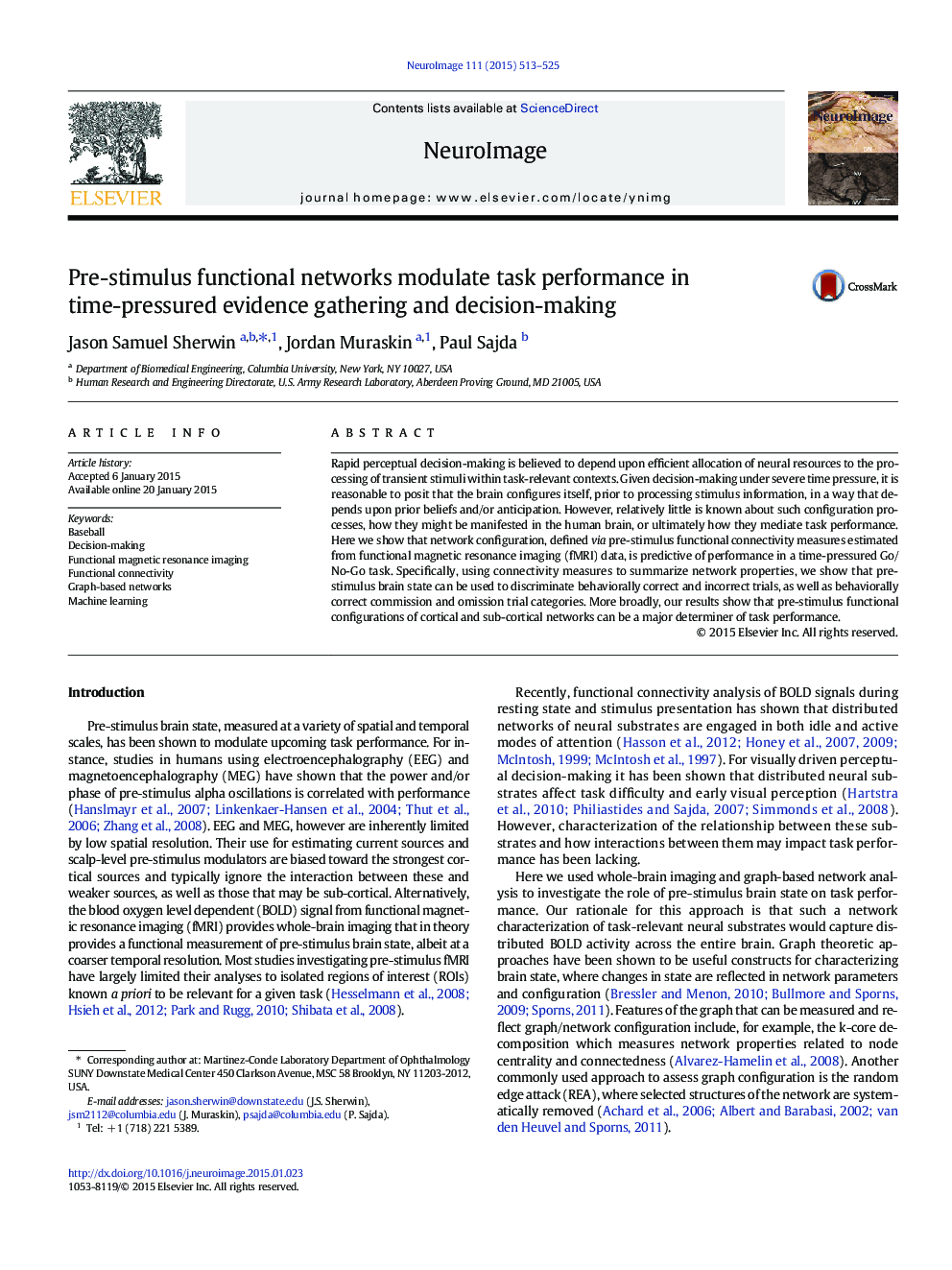| Article ID | Journal | Published Year | Pages | File Type |
|---|---|---|---|---|
| 6025506 | NeuroImage | 2015 | 13 Pages |
â¢Searchlight fMRI reveals task-relevant nodes affecting task performance.â¢Graph theory relates pre-stimulus state to future task performance.â¢Significant driver of future task performance is connectivity of the putamen.
Rapid perceptual decision-making is believed to depend upon efficient allocation of neural resources to the processing of transient stimuli within task-relevant contexts. Given decision-making under severe time pressure, it is reasonable to posit that the brain configures itself, prior to processing stimulus information, in a way that depends upon prior beliefs and/or anticipation. However, relatively little is known about such configuration processes, how they might be manifested in the human brain, or ultimately how they mediate task performance. Here we show that network configuration, defined via pre-stimulus functional connectivity measures estimated from functional magnetic resonance imaging (fMRI) data, is predictive of performance in a time-pressured Go/No-Go task. Specifically, using connectivity measures to summarize network properties, we show that pre-stimulus brain state can be used to discriminate behaviorally correct and incorrect trials, as well as behaviorally correct commission and omission trial categories. More broadly, our results show that pre-stimulus functional configurations of cortical and sub-cortical networks can be a major determiner of task performance.
